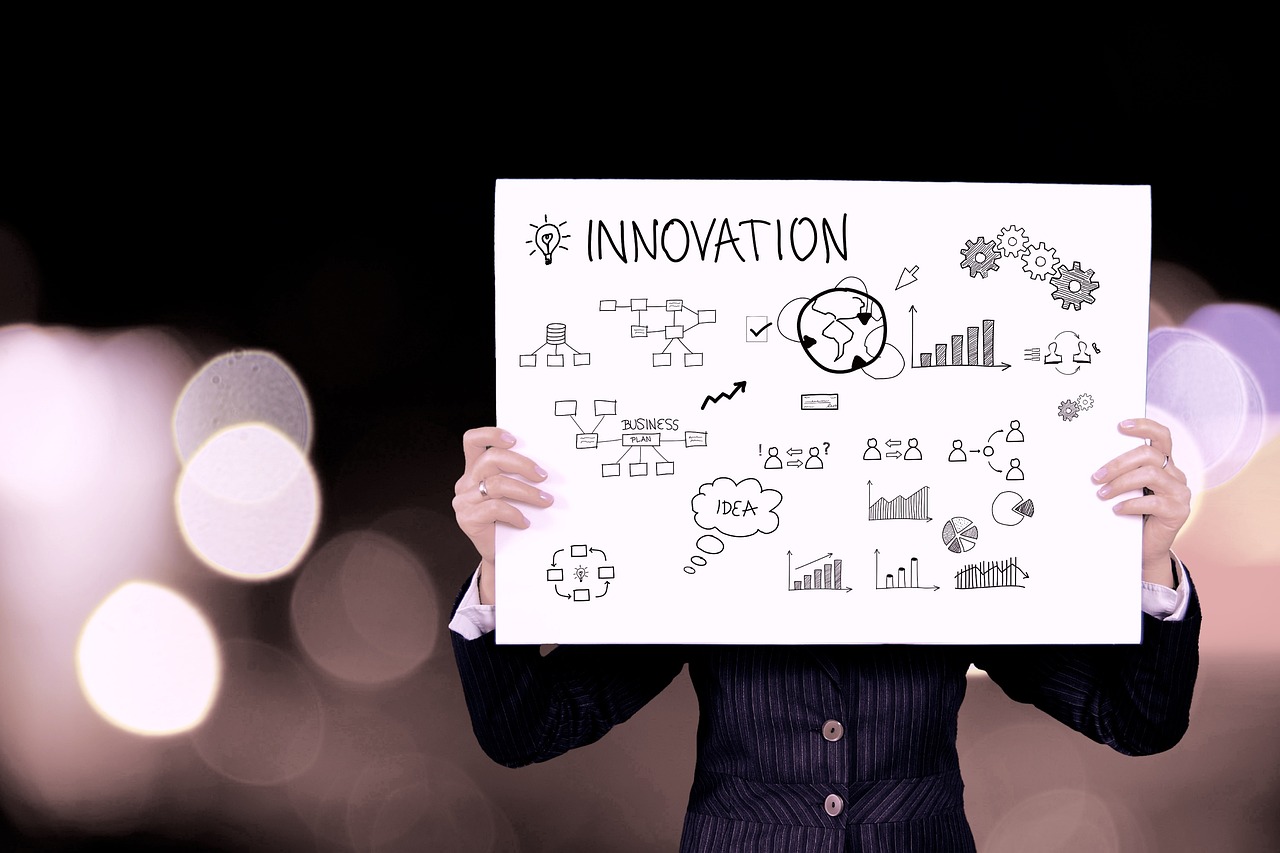In an era where rapid technological advancements intertwine with relentless market rivalry, innovation emerges not merely as an advantage but as a necessity. Across sectors, from consumer electronics to space exploration, industry giants like Apple, Google, and Tesla continually push the boundaries to redefine possibilities and maintain dominance. Meanwhile, companies such as Amazon, Microsoft, and Samsung harness innovation to streamline operations, personalize customer experience, and expand into uncharted territories. This competitive fervor requires businesses to cultivate flexibility, creativity, and an unyielding pursuit of novel solutions.
True innovation transcends fleeting trends and buzzwords; it is a strategic imperative that reshapes business models and drives sustainable growth. As organizations navigate the complexities of a fast-evolving market landscape, understanding what underpins authentic innovation becomes crucial. This exploration uncovers the multifaceted drivers that enable companies to differentiate, adapt, and lead in 2025, amidst challenges ranging from shifting consumer demands to technological disruption.
How Innovation Fuels Competitiveness and Distinct Market Advantages
Innovation serves as the backbone of competitive advantage in today’s saturated markets. For instance, Apple’s iterative enhancements in iPhone technology and Google’s continuous AI developments showcase how even incremental innovations can secure market leadership. These innovations provide unique value propositions, enabling companies to attract and retain customers against a backdrop of intense rivalry.
At its core, innovation creates differentiation. It empowers organizations to break free from commodity-like offerings and venture into unexploited niches through disruptive products, services, or business models. Consider Tesla’s revolutionizing of the automotive industry with electric vehicles and autonomous technology, reshaping consumer expectations and industry standards.
Moreover, innovation directly contributes to superior customer experiences and operational excellence. Amazon’s pioneering use of predictive analytics and robotics transforms logistics efficiency, ensuring rapid delivery and personalized shopping — key factors in retaining customer loyalty. Similarly, Microsoft’s cloud solutions enhance organizational agility, helping enterprises adapt swiftly to market changes.
- Unique Value Creation: Innovation enables differentiation in crowded markets.
- Disruption of Traditional Models: Companies like Tesla redefine entire industries.
- Enhanced Customer Experience: Personalized services foster strong customer retention.
- Operational Efficiency: Technology-driven innovation streamlines business processes.
| Company | Innovation Type | Market Impact |
|---|---|---|
| Apple | Sustaining Innovation | Continuous product refinement sustaining market dominance |
| Tesla | Disruptive Innovation | Redefinition of automotive market with electric vehicles |
| Amazon | Sustaining & Disruptive | Revolutionizing retail logistics and cloud services |
Understanding the dual nature of sustaining and disruptive innovation is vital. Sustaining innovations improve existing offerings and cater to current customers, while disruptive innovations create new markets or challenge incumbents. Successful firms integrate both strategies to solidify their position and fuel growth, an approach echoed in resources like FasterCapital’s studies on market competition.

Empowering Growth Through Innovative Solutions and Proactive Adaptation
Growth driven by innovation is evident when companies develop new revenue streams and optimize internal operations. For example, Nvidia’s leadership in graphics processing units (GPUs) reflects iterative innovation that responds to growing demand in AI and gaming sectors, facilitating enormous business growth. Adobe’s transition to cloud-based subscription services transformed its revenue model, exemplifying how innovation fosters sustainable expansion.
Yet, innovation is also a critical tool for adapting to evolving market forces. The COVID-19 pandemic accelerated digital transformation for firms like IBM and Samsung, pushing them to adopt remote work technologies and reimagine product delivery. This agility ensures resilience amidst unpredictability.
To enable such outcomes, organizations must build cultures that support experimentation and embrace risk. Encouraging cross-functional collaboration stimulates diverse perspectives, fostering breakthrough ideas.
- New Revenue Channels: Launching novel products and services to meet emerging needs.
- Operational Efficiency: Streamlining processes through innovative technologies.
- Agility: Rapid response to market shifts ensures sustained competitiveness.
- Culture of Experimentation: Embracing risks and learning from failures accelerates innovation.
| Factor | Example | Impact |
|---|---|---|
| New Business Models | Adobe’s SaaS model | Steady subscription revenue |
| Technological Advances | Nvidia’s AI GPUs | Expanded applications and market reach |
| Adaptability to Change | IBM’s remote work infrastructure | Business continuity during disruptions |
The relationship between culture and innovation is underscored in expert insights such as Forbes’ strategies for fostering innovation in dynamic markets. Leadership that empowers employees to innovate while sustaining operational excellence is a common denominator amongst the top-performing companies.
Implementing Human-Centered Design and Design Thinking for Effective Innovation
Human-centered design has gained prominence as a vital pathway to meaningful innovation. Rooted in empathy, it focuses on addressing the explicit and latent needs of users. In 2025, leading corporations like Microsoft and Samsung employ design thinking methodologies to bridge creativity and practical application, ensuring new offerings resonate genuinely with customers.
The design thinking process involves four essential phases:
- Clarify: Research to understand user pain points and frame problems accurately.
- Ideate: Generate diverse, innovative ideas challenging conventional assumptions.
- Develop: Build prototypes rapidly to explore solution viability and functionality.
- Implement: Communicate and deploy solutions tailored to stakeholder needs.
For example, SpaceX applies human-centered design by iterating spacecraft features based on astronaut feedback, enhancing safety and usability for space missions. This approach exemplifies how integrating design thinking helps in creating innovations that are desirable, feasible, and viable—a triad essential to business success.
- Desirability: Ensures consumers actively want the product or service.
- Feasibility: Assesses resources and technological capability.
- Viability: Guarantees long-term sustainability and profitability.
Companies that embed this mindset into their innovation strategies reap benefits in customer satisfaction and market differentiation. Explore authoritative discussions on the role of innovation in driving competitive advantage at Wolf & Grayson.

Balancing the Operational and Innovative Worlds to Sustain Momentum
Innovation flourishes when organizations successfully meld creative exploration with operational discipline. The operational world prioritizes stability, metrics, and routine, whereas the innovative world values experimentation, risk-taking, and uncharted ideas. Businesses like IBM and Nvidia navigate this duality effectively by fostering innovation labs while maintaining rigorous performance standards.
Failing to balance these domains can stifle innovation or undermine execution. For instance, overemphasizing routine can suppress new ideas, while neglecting operational realities may cause impractical innovations. A harmonious balance is essential for continuous value creation.
| World | Focus | Challenges | Organizational Practices |
|---|---|---|---|
| Operational | Efficiency, Routine, Stability | Resistance to risk, Bureaucracy | Standard Operating Procedures, KPIs |
| Innovative | Creativity, Experimentation, Risk-taking | Resource unpredictability, Lack of structure | Innovation Labs, Agile Methodologies |
Leaders who foster permeability between these worlds encourage teams to ideate freely while grounding their ideas in feasible business realities. This concept is explored in academic and professional circles, such as the Harvard Business School’s blog, emphasizing the importance of integrating creative and operational perspectives.

What Drives True Innovation: Operational vs. Innovative World
| Aspect | Operational World | Innovative World |
|---|
Strategies to Cultivate and Embed Innovation Culture in Organizations
Creating a sustainable innovation culture requires deliberate strategies that promote creativity while aligning with corporate goals. Companies like Adobe and Microsoft exemplify practices that nurture idea generation and accountable experimentation, ensuring an ongoing pipeline of impactful innovations.
Essential tactics include:
- Leadership buy-in: Visionary leaders prioritize innovation, encouraging risk-taking and learning from failure.
- Cross-functional teamwork: Diverse teams foster a broad spectrum of ideas and collaborations.
- Structured experimentation: Implementing agile processes and rapid prototyping to quickly validate concepts.
- Recognition and incentives: Rewarding innovative contributions motivates continuous engagement.
- Investment in education: Providing access to innovation courses and design thinking workshops enhances employee capabilities.
Embedding these approaches lets businesses unlock creative potential while managing risks effectively. Such robust frameworks pave the way for transformative breakthroughs that sustain market leadership and growth.
| Strategy | Description | Example |
|---|---|---|
| Leadership Support | Fosters a risk-tolerant environment | Microsoft encouraging innovation labs |
| Cross-functional Collaboration | Integrates diverse expertise | Adobe’s multidisciplinary teams |
| Agile Experimentation | Enables rapid prototyping and feedback | Tesla’s fast iteration cycle for electric cars |
| Recognition Programs | Incentivizes innovative ideas | Google’s innovation challenges |
| Continuous Learning | Develops employee innovation skills | IBM’s internal innovation workshops |
For more insights on maintaining innovation momentum, consult resources such as Innovation Within’s corporate innovation blog.
What is innovation, and why is creativity alone insufficient?
Innovation is the creation of products, services, or processes that are both novel and useful. Creativity generates ideas, but innovation involves implementing those ideas to produce tangible value. Without usefulness, creativity does not result in impactful change.
How can businesses foster disruptive innovation alongside sustaining innovations?
Successful organizations dedicate resources to exploring new markets and technologies (disruptive innovation) while continuously improving existing products and services (sustaining innovation). Balancing these efforts enables sustainable growth and market leadership.
Why is design thinking crucial for modern innovation?
Design thinking centers solutions on human needs using empathy and iterative prototyping. This approach enhances the desirability, feasibility, and viability of innovations, increasing their chances of success in competitive markets.
How should companies manage the tension between operational efficiency and creative experimentation?
Businesses must cultivate an environment where teams are free to experiment but remain aligned to operational goals. Creating dedicated innovation units alongside standard operational teams helps maintain this balance.
What steps can leadership take to embed a culture of innovation throughout an organization?
Leaders can champion innovation by fostering open communication, rewarding risk-taking, investing in continuous learning, and ensuring cross-functional collaboration that bridges diverse skills and perspectives.


